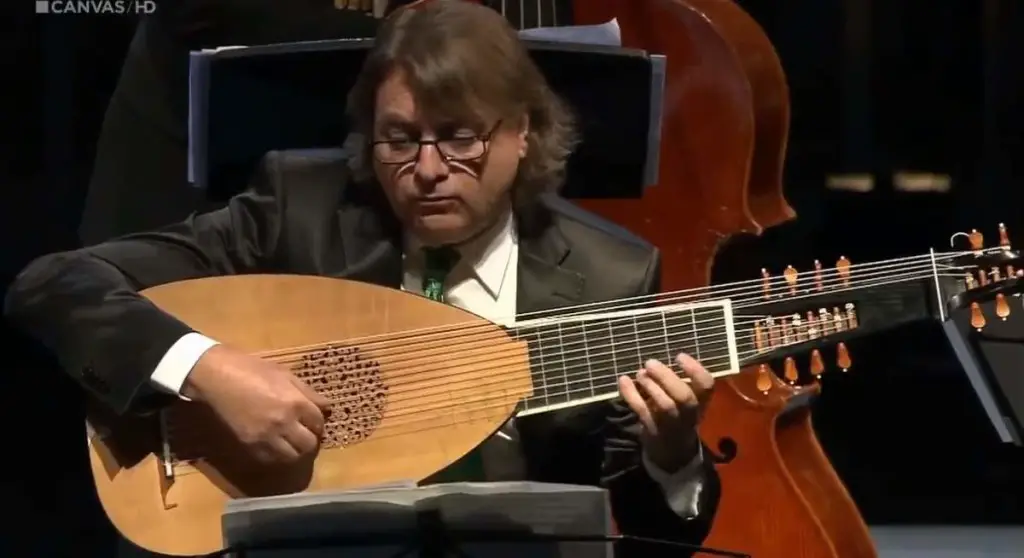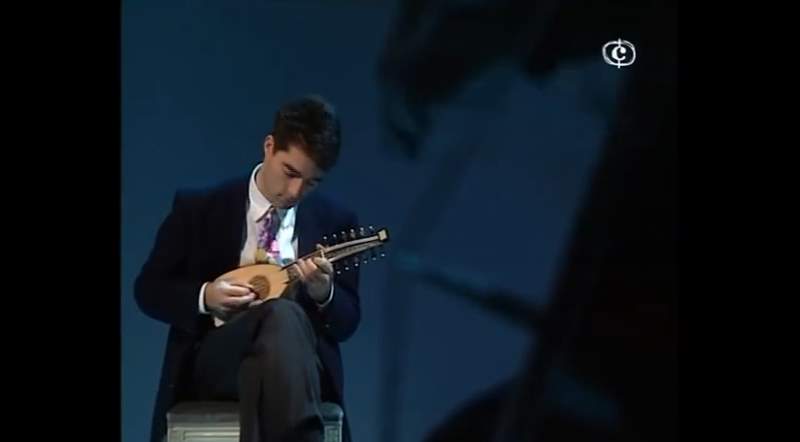Accompanied by the Italian early music ensemble Il Giardino Armonico (English: the Harmonious Garden), the Swiss lutenist Luca Pianca performs Antonio Vivaldi’s Lute concerto in D major, RV 93, one of four works featuring the solo lute written by the Italian baroque composer.
Antonio Vivaldi’s Lute concerto in D major, RV 93
Antonio Vivaldi’s Lute Concerto in D Major, RV 93, stands as a testament to his versatile composing skills and the Baroque era’s affinity for stringed instruments. Vivaldi, predominantly known for his violin compositions, showcased his ability to create melodic and harmonic richness in this lute concerto, a feature that makes it a significant piece in the repertoire for guitar and lute.
Vivaldi wrote the piece in the 1730s, a period in which he wrote two of his other works featuring the lute, the trios for violin, and the lute in G minor and C major.
Composed in the 18th century, RV 93 is one of the few works by Vivaldi where the lute takes a central role. This concerto is a prime example of Vivaldi’s skill in adapting the stringed instrument’s unique qualities into the concerto form, a form he was very familiar with. His expertise in stringed instruments is evident in the way he crafted the concerto to highlight the lute’s delicate and expressive qualities while maintaining a balance with the accompanying string orchestra.
The Lute Concerto in D Major is often transcribed for guitar, an adaptation that became popular in the 20th century. This adaptation has not only brought the piece into the mainstream classical guitar repertoire but has also helped to revitalize interest in Baroque music and historical plucked string instruments.
Vivaldi’s work on this concerto reflects his broader contributions to Baroque music. He was a prolific composer who greatly influenced the development of the concerto form, and his work on RV 93 showcases his ability to infuse his compositions with both technical mastery and emotive depth. The concerto remains popular among both classical guitarists and lutenists, and its enduring appeal lies in its melodic charm and the intricate interplay between the soloist and the orchestra.
The popularity of the Lute Concerto in D Major, RV 93, in the modern era, underscores not only Vivaldi’s genius but also the timeless appeal of Baroque music. It’s a piece that bridges the historical gap, bringing the sound and sensibilities of Vivaldi’s time into contemporary concert halls and recordings. Its adaptability to modern instruments like the guitar also speaks to the universal qualities of Vivaldi’s music, capable of transcending its original context to find a new and appreciative audience in the modern world.
There are three movements:
- Allegro: The first movement is in a fast tempo and begins with a ritornello played by the entire orchestra and then repeated by the solo lute. According to AllMusic critic Brian Robins, the ritornello “contrasts a tuneful opening theme with a more lyrical motif in the minor mode.” During the movement, the solo lute plays melodies in contrast to the ritornello. The movement consists of several sections, almost all incorporating a portion of the ritornello melody.
- Largo: The second movement also consists of several sections. Robins describes this movement as a “reflective meditation by the soloist” against accompaniment by the violins and pizzicato bass. Robins praises the movement’s “exquisitely simple shift from triple to duple meter.”
- Allegro: The final movement is another fast movement in a 6/8 time signature which Robins describes as having “a bit of tarantella-like feel.” The soloist also has the option of playing the half notes in the movement using a more vigorous 12/8 time signature.
Luca Pianca

Luca Pianca (born in 1958 in Lugano, Switzerland) is a Swiss musician-lutenist of ethnic Italian ancestry whose specialty is archlute. In 1985 he co-founded Il Giardino Armonico with Giovanni Antonini (the Italian conductor and soloist on the recorder and baroque transverse flute), a pioneering Italian early-music ensemble based in Milan. He has premiered works by the contemporary lutenist-composer Roman Turovsky-Savchuk at international festivals and received numerous international awards for his recordings.
